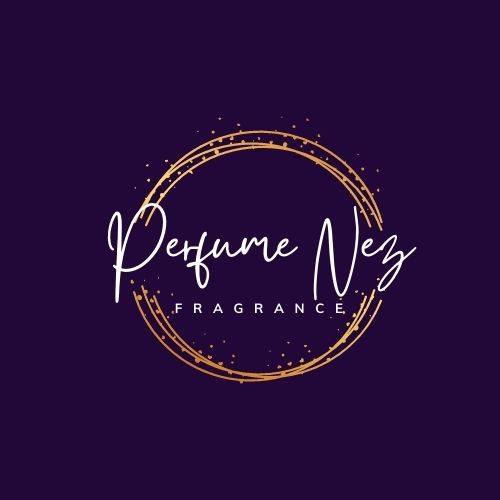Is Van Cleef and Arpels Perfume Cruelty Free
Click For Affordable Inspired Perfume Alternatives
Van Cleef & Arpels is a renowned luxury jewelry and fragrance brand celebrated for its exquisite craftsmanship and timeless elegance. As consumers become increasingly conscious of ethical and sustainable practices, many inquire about the cruelty-free status of their favorite brands. When it comes to perfumes, questions often arise regarding the sourcing of ingredients and testing practices. In this article, we will explore whether Van Cleef & Arpels perfumes are cruelty-free, shedding light on their policies, testing methods, and commitment to ethical standards.
Is Van Cleef and Arpels Perfume Cruelty Free
Determining if Van Cleef & Arpels perfumes are cruelty-free requires examining the company's sourcing policies, manufacturing practices, and whether they conduct or commission animal testing. As a luxury brand operating globally, their practices may vary depending on regional regulations and market demands. Let’s delve into the specifics to understand their stance on cruelty-free practices.
Van Cleef & Arpels and Animal Testing Policies
Van Cleef & Arpels is primarily known for its jewelry and high-end fragrances. Unlike many cosmetic brands that have publicly committed to cruelty-free standards, Van Cleef & Arpels does not prominently advertise or disclose a clear cruelty-free policy on their official channels. This lack of explicit information makes it challenging to classify them definitively as cruelty-free. However, examining their parent companies and regional operations can provide additional insights.
Parent Company and Regional Regulations
- Parent Company: Van Cleef & Arpels is owned by the Richemont Group, a Swiss luxury conglomerate.
- Regulatory Environment: The European Union, where Richemont is based, has strict regulations regarding animal testing for cosmetics and fragrances.
- EU Regulations: Since 2013, the EU has banned animal testing for cosmetic products and ingredients sold within its borders.
- Implication: Most European brands, including Richemont companies, are likely to adhere to these regulations, which prohibit animal testing for their products marketed in the EU.
Global Markets and Animal Testing
- Market Differences: Brands often modify their testing practices depending on regional laws. For example, products sold in China historically required animal testing unless they are classified as non-specialized cosmetics.
- China Market: If Van Cleef & Arpels perfumes are sold in China, they might have undergone or be subject to animal testing requirements unless specifically exempted.
- Current Trends: Many luxury brands are moving away from animal testing worldwide, especially with a growing consumer demand for cruelty-free products.
In summary, while Van Cleef & Arpels does not openly declare itself as cruelty-free, their European base and compliance with EU regulations suggest that their products are not tested on animals within the EU. However, the lack of explicit cruelty-free certification or policy indicates that they may not meet the criteria for being officially cruelty-free according to animal rights organizations.
Ingredients Sourcing and Ethical Considerations
Another critical aspect of cruelty-free status involves the sourcing of ingredients used in perfumes. Ethical sourcing ensures that ingredients such as musk, civet, ambergris, and other animal-derived components are obtained without harming animals.
Use of Animal-Derived Ingredients
- Musk: Traditionally sourced from musk deer, but synthetic alternatives are now common.
- Civet: Derived from civet cats, often obtained through unethical means in the past.
- Ambergris: Whale excretion, which is now mostly replaced by synthetic substitutes due to conservation efforts.
Most modern luxury brands aim to avoid animal-derived ingredients or use synthetic counterparts to promote cruelty-free products. However, specific information about Van Cleef & Arpels’ ingredient sourcing is limited. Without official disclosure, it’s difficult to confirm whether their perfumes contain ethically sourced or synthetic ingredients exclusively.
Third-Party Certifications and What They Mean
Certifications can serve as reliable indicators of a brand’s cruelty-free status. Some of the most recognized certifications include:
- Leaping Bunny: Certifies that no animal testing is conducted or commissioned at any stage.
- PETA’s Beauty Without Bunnies: Indicates cruelty-free practices.
- Cruelty-Free International: An organization that audits and certifies cruelty-free products.
Currently, Van Cleef & Arpels does not hold any of these certifications for their perfumes. The absence of such endorsements suggests that they are not officially recognized as cruelty-free by these organizations.
Implications for Consumers
- Consumers seeking cruelty-free perfumes should consider brands with official certifications.
- Researching the company's policies and certifications can provide peace of mind.
- Supporting brands with transparent cruelty-free practices encourages industry-wide change.
Alternatives for Cruelty-Free Perfume Lovers
If cruelty-free practices are a priority for you, numerous brands specialize in ethical and cruelty-free perfumes. Some notable options include:
- Lush: Known for handmade, cruelty-free fragrances and products.
- Kate Walsh Boyfriend: Vegan and cruelty-free perfume options.
- Byredo: Committed to ethical sourcing and cruelty-free ingredients.
- Le Labo: Offers cruelty-free fragrances with transparency about ingredients.
Choosing products from these brands ensures that your perfume experience aligns with your ethical values while enjoying luxurious scents.
Conclusion: Is Van Cleef and Arpels Perfume Cruelty-Free?
In conclusion, Van Cleef & Arpels, as a luxury brand operating primarily within the European market, likely adheres to regional regulations that prohibit animal testing for products sold in the EU. However, the brand does not publicly declare a cruelty-free stance or hold any recognized cruelty-free certifications. Their practices regarding the sourcing of animal-derived ingredients remain largely undisclosed, making it difficult to definitively label their perfumes as cruelty-free.
For consumers seeking absolute assurance that their fragrances are cruelty-free, it is advisable to choose brands with transparent policies and certifications from reputable organizations. While Van Cleef & Arpels continues to evoke elegance and exclusivity, those committed to ethical consumerism may prefer to explore brands dedicated to cruelty-free practices. Ultimately, informed choices and supporting ethical brands can contribute to a more compassionate beauty industry.
Buy Perfumes - Best Online Retailers
Click For Affordable Inspired Perfume Alternatives
Click For The Best Niche Perfumes & Decants
Pheromone Perfumes - Confidence, Attraction & Appeal - Click For More
Home Fragrances & Candle Warmers - Click To Scent Up Your Spaces Today!
